https://www.youtube.com/watch?v=U8tam5js86I
How To Make Every Pasta _ Method Mastery _ Epicurious
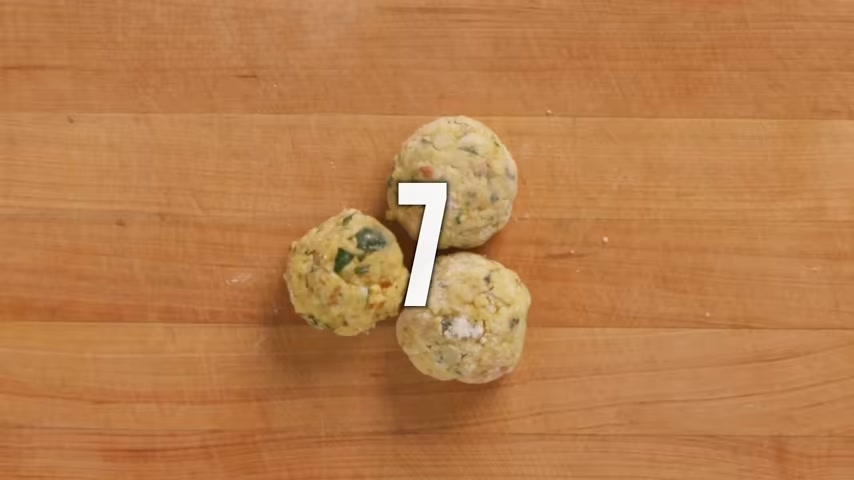
Hi , I'm Hillary Sterling , the executive chef and partner at Vicks restaurant here in New York City .
And today I'm going to show you how to shape every pasta .
So today we're going to go through all the different areas and some different doughs , traditional linguini to tale to Bucco tini to some of the lesser known as Strati Norte .
The Italians have been the authority on pasta making forever .
Every pasta shape is designed for a sauce so that it captures whatever sauce that is given for it and actually was created for it .
The Italians do it the best here are the tools to make and shape pasta in order to get our pasta where we need it to be .
We always need a pasta roller one that is easy to use hand crank .

Perfect for all sorts of pasta that you can make .
If you do not have the patience for a hand crank , we have an electric version if we don't want to sheet our dough .
The next thing we can always use is a pasta extruder .
There's almost 1200 different shapes of pasta .
300 different kinds of them come from an extruded version .
So this is a different dough .
This is your semolina and water as opposed to more of an egg based process where you use your hand crank .
If we are looking for more of a spaghetti , our guitarra right here , guitar strings to cut through a beautiful pasta shape .
In order to push your spaghetti through these beautiful strings .
We need a rolling pin .
It's the only other tool that's essential in making pasta .
One of my favorite tools in the kitchen .
One of my second favorite tools in the kitchen bench scraper .
This picks up your pasta .
This keeps your flour in order it cuts the dough and you can shape things .
So this is also one of those things I can't live without .
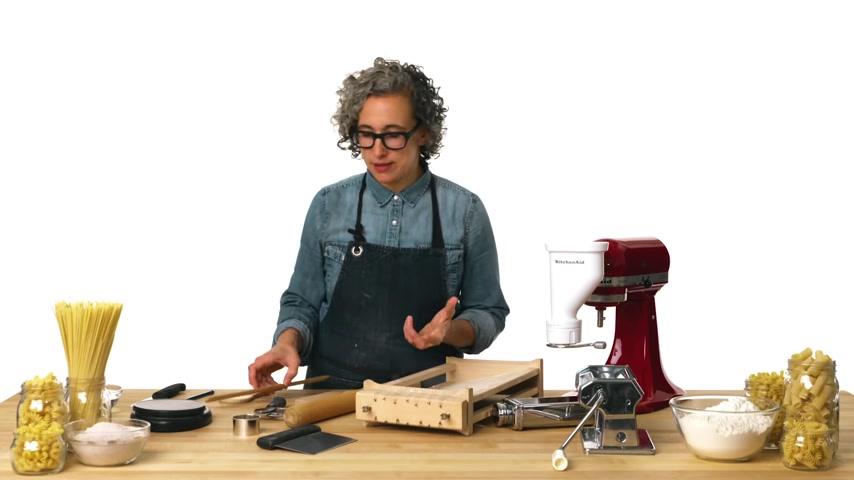
One of my other favorite ones is a beautiful cookie cutter .
We use the to cut poti raviolis .
Anything else we need to start in a round shape form if we are cutting squares or rectangles to start like our , we are using a pasta cutter .
One of my other favorite tools is a G board .
We can make Gargano cale Ma .
This is a different shape version of a board .
Some of my last favorite tools I can't live without a ruler .
We have so many different shapes that we can make and that we need this 12 inch ruler to help us guide the way I like to use a pencil for many things , for note , taking scribbles , writing recipes on the wall and making Garelli , the old fashioned my last two tools that I need a short knife to cut with .
And then last but not least the scale pasta in itself is an art , but it's also a science without a scale , our dough can go right or wrong .
All right .
Let's get to shaping pasta .
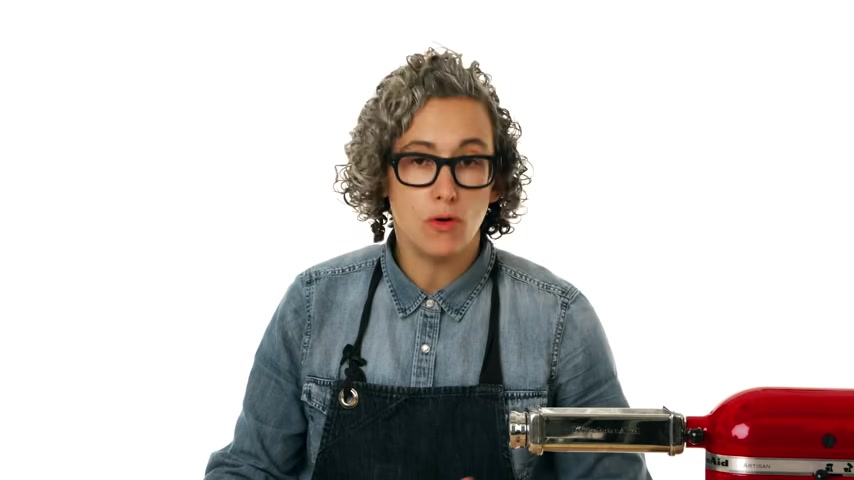
This is a t we're going to start off with a really , really wonderful shape , very easy to make called Cotti .
And the Cotti stems from a traditional circle shape coin pasta that usually has the family's crest on it so that you could tell when you were buying Cotti at the local market that you knew who made it .
So , what I'm doing here is I'm going to use a rolling pin and just kind of get it's flat enough to go through a pasta roller or sheer .
So always when we're starting with a roller is we go as the wide as possible .
You never want to try to squeeze anything through .
And then we're going to let it run a couple of times .
We're going to get it to essentially not paper thin for this pasta , but just before that .
So it still has some texture and some bite to it .
Always have a little flour on your board and the pasta so that it doesn't stick the roller .
Once you get pasta stuck in here , there's really no going back , unfortunately .

So now we have a nice shape here So a circle cutter I'm using old fashioned cookie cutter , biscuit cutter .
I don't have a Family Crest .
So I like to use a board or a cavi maker to kind of emulate ridges texture .
And then I take them on a board , use the palm of my hand and then slowly peel them off .
It's a very delicate pasta .
So it's really important that the sauce that goes with it is light and elegant .
It is a beautiful canvas .
It's a plate .
It's really wonderful and I love the history of it .
A family crest like I think we should bring that back around .
I'd like to create one right now and that's the Cotti , this is a , so when we're cutting out these kind of shape , I like to use a ruler because honestly , it's the only way to do it because we're cutting out a perfect square .
So right now I'm going to take our dough and just kind of square off to make this easier to work with .
I'm gonna cut this right down the center for the far .
It is a 1.5 inch by 1.5 inch .
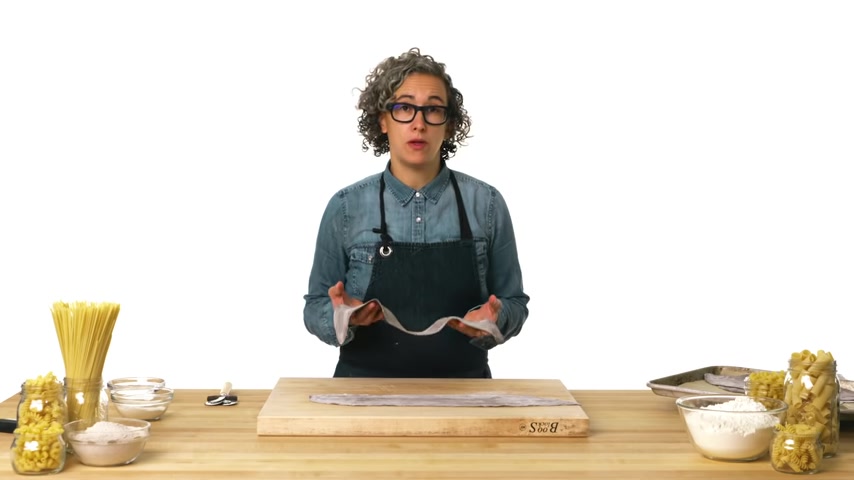
So I'm just going to make little ridges here along the way and then we're gonna cut them all the way down with our trusty ridge cutter .
We're going to put those nice ridges on the edge and then I'm going to do one more time , get that ruler out 1.5 and then 1.5 , what we're going to do is we're going to take these and we're going to turn them into butterflies .
So all we have to do is cinch them up and pinch them together and then we have our butterflies .
And that's the , this is pizzo .
This is a buck wheat dough from the north of Italy in Lombardia , right on the border of Switzerland .
There's a small town called Daina where this is one of the most well known dishes that comes from it .
So this pasta is made with 80% buckwheat flour mixed with a traditional double zero pizza is Latin from Pita and Pizzo carol means poor or ugly or bad or gray .

So this is not the prettiest of the dough , but it's also one of the most flavorful .
The buckwheat adds a really lovely texture .
So I'm going to square these off Pizzo curry can be either a long , thin or wide and short .
The dish is made with cabbage and potatoes .
So I prefer to make them shorter .
So I'm going to make these two wide shapes .
That's one example of the Pizzo curry and then they also make them into rich versions as well .
This dish is served with a specific cheese that's also from the Alps called Beto .
And it's really one of those hearty winter dishes that I really do cherish and love and that's Pizzo carry .
This is Tahari .
So our next pasta shape comes from the north in Monte called .
And this is a very traditional shape and really easy to make .
We're gonna make sure that there's a little bit of flour on top of each roll because we're gonna roll this up .
This pasta literally translates to , to cut .
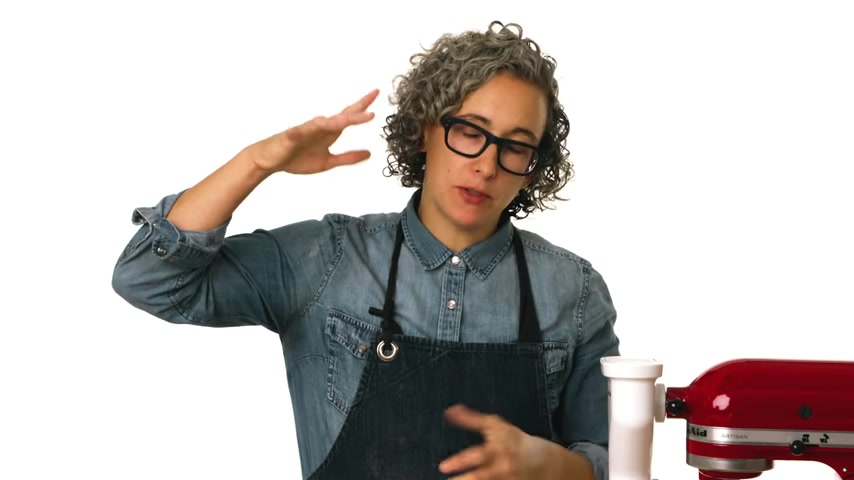
So that's exactly what we're going to do .
So we're going to cut ribbons , pick them up .
Traditionally served with a meat Ragu .
It's so rich and silky .
That's why this one is pretty special and so easy to make .
And that is Tahari .
This is big .
One of the ancient pasta tools is called the big .
It is a chamber and you're able to push pasta through it and then twist it .
So the big is a really , really cool tool but not the most efficient in today's time .
So we are making it with a extruded version .
So this is a buck wheat dough with eggs in Venice .
You'll find this served with anchovies and caramelized onions .
It's one of my favorites .
You're getting some of the best Venice with this dish and that's big .
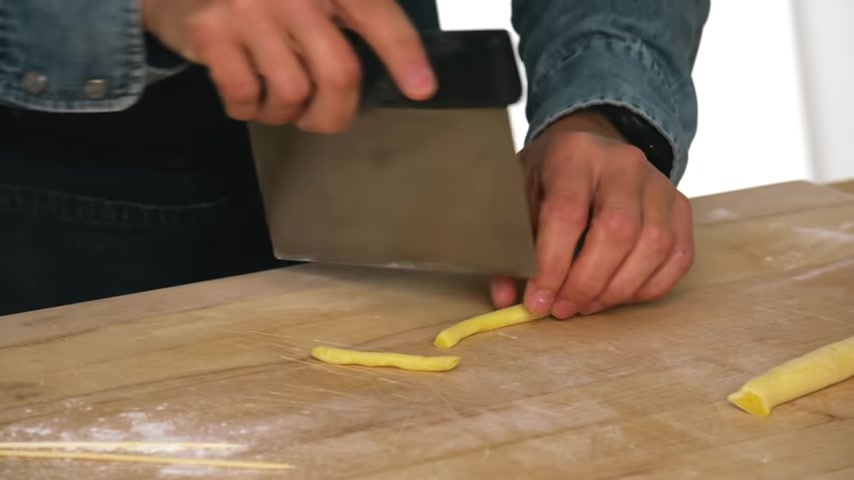
This is now we're in Longoria known for two very specific pastas , Cotti and trophy , very traditionally served with basil pesto .
So what we have to do with this pasta is take our egg dough and roll it into ropes .
There are numerous ways to make this .
You can use a metal rod .
I like to use a skewer or you can just use your hands .
The translation is short and twisted .
So that's the goal here .
So we're going to cut these into about two inches and then roll them out a little bit further .
And then once we have our sizes that we need , we're going to twist the edges like you were twisting like almost a mustache .
The first thing that came to my mind , I don't know why .
So I'm going to take my skewer .
There's two different ways we can do this .
We can gently push and wrap the pasta around it , twist the skewer and then give it one more roll .
There's also we can wrap the pasta almost similar to a fusilli if you're really going for complete twists .
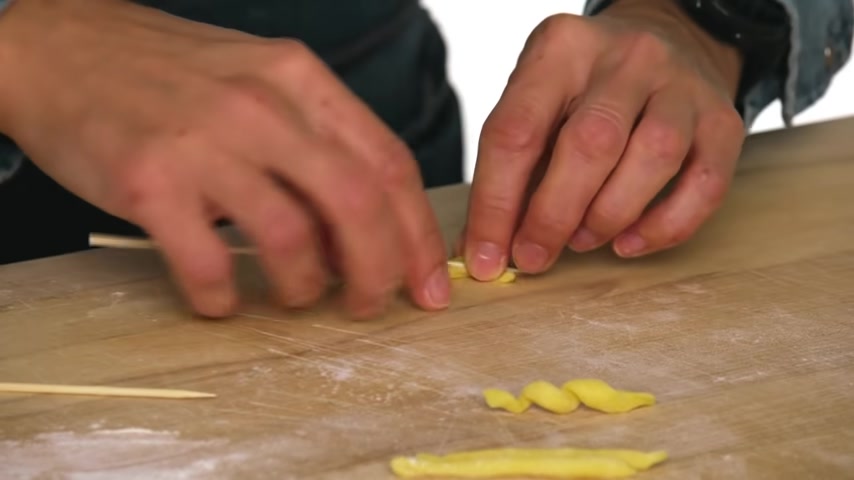
So both of these are acceptable versions of Troi .
They're both short and twisted .
That's all you need for this pasta and that's trophy .
This is , we are now back very high in the North in Trentino Alto .
A looking at a leftover day old bread , a bunch of ingredients and we're going to make a dish called Kenly out of all of these things .
So canned is a take on a German dumpling that has been translated to more of a Italian setting .
So we're going to take some day old bread .
We're gonna soak this with milk while that's soaking .
We're going to crack two eggs and gather our cheeses and parsley canned .
Dali traditionally is made with speck which is a smoked prosciutto .
We are not making that right now .
With this one , we're going to keep this vegetarian a little bit more classic with a provolone , a little bit of flour , some chopped parsley , some nutmeg .
And then our day old bread is , is getting soaked up with that milk .
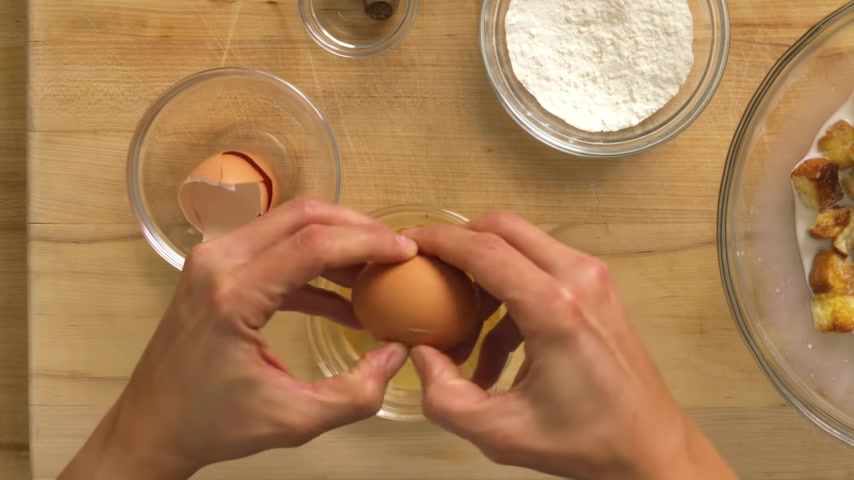
This is served traditionally in a stock and usually served with lots of greens and kale or broccoli .
We're going to wait for this to kind of like really absorb .
So not all pasta is made with just flour and eggs .
This is an example of one that's really special and true to a northern region that takes a lot of love from its outline areas .
So all the things that are going to help bind this are the cheeses and the eggs .
So we're going to drop our two eggs in here , mix these up .
So when we're making this can of dali , we're going to let it sit after we make our dough .
But also we're going to drop these right into instead of poaching them in boiling water , we're going to drop them right into a boiling stock kind of like the Italian matzo ball if you will .
So we're gonna cook them , we're gonna add all of our provolone or parsley .
So once we have this mix nicely together , I'm gonna add some flour .
So now we have a beautiful , nice mixture .
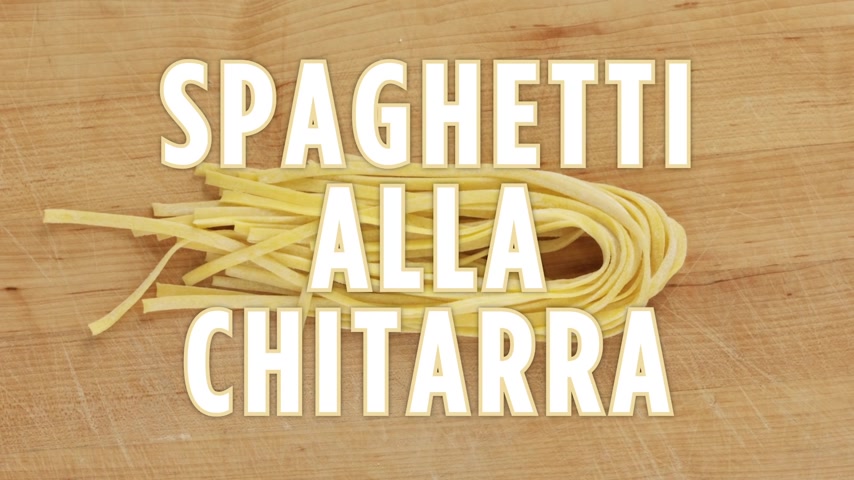
So we'll let that sit for a little bit .
But basically , we're going to form these into beautiful balls .
And then when we make them , we're going to drop them right into boiling stock and they'll hold their shape .
And that's kind of , this is spaghetti Ala Guitarra .
So this is called the Quit Tara .
It is styled after a guitar .
It has two sides , one thicker , one thinner .
This is traditionally from Abruzzo .
They call it macaroni as well .
And we're going to essentially push the pasta through it .
So I have my sheet .
So we're going to cut this so that it fits just below the wooden lines .
And you can actually turn these to make it tighter or looser .
We're going to flower up our guitar to make sure it doesn't stick on any of the wires and then just beautiful force , nice , even rolls and then it holds sauce so well .
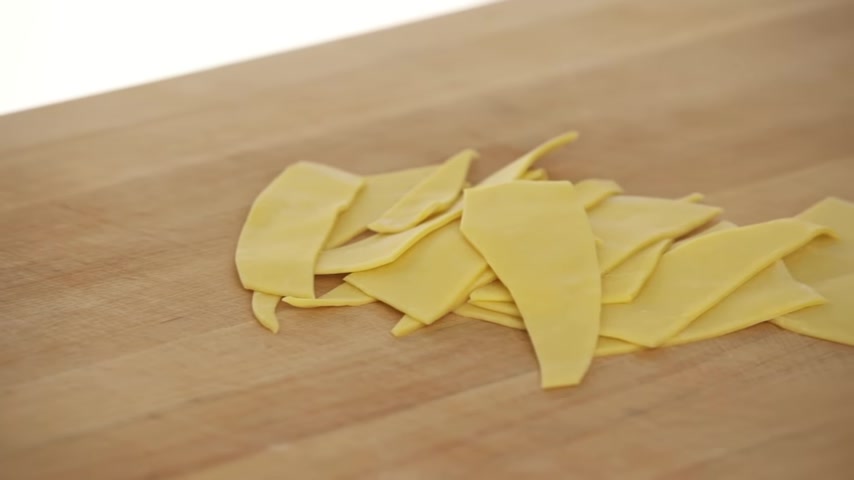
And then just the actual nature of being able to force a piece of dough through wires and then something so beautiful comes out of it .
And that is spaghetti Alita .
This is Malta .
So now we're moving on to Amelia Romania , which is on the northern side of the central region .
We're going to make malti which means badly cut .
So this is a shape that's really up to you .
We just kind of cut it the way we feel and that's all it is .
It is just poorly cut pasta .
We like to cut them as like shark fins because they fold nicely into a pasta .
You'll see these all throughout Italy in every region has some poorly cut pasta .
So when you're plating it , you can fold it and it acts as ribbons .
And that's the malta , this is Pre and just across in the water is Sardinia .
One of the things that they're known for , it's called pre , which is what they call Sardinian cous cous .
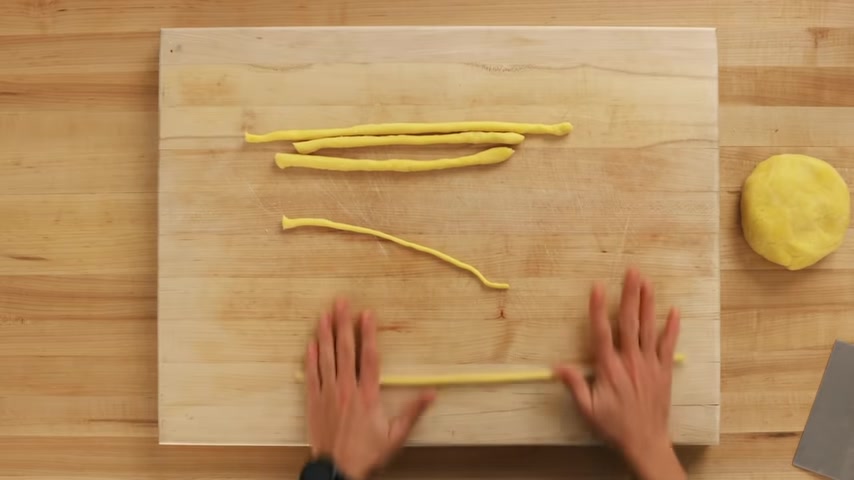
So we can use a semolina dough , we can use an egg yolk dough .
There's a couple of different varieties .
One is very coarse rustic that gets put through a rer or a very fine dye when it's extruded or more of an Israeli style cous cous which are little round balls .
So what I'm doing right now is I'm rolling this out super thin .
So we're going to just take this and we're going to cut as little as possible .
I'm gonna put a little bit of flour over here so that they don't stick together .
And we're gonna make little versions of cous goose .
This is very , traditionally served in very different ways .
So cous goose in Sardinia can be served with potatoes and saffron or with seafood .
It can hold up to so many different things and it can belong anywhere you can serve it with anything you want .
Then I've never been disappointed with this pasta and that's , this is pale .
So now we're switching gears a little bit and we're changing our dough .
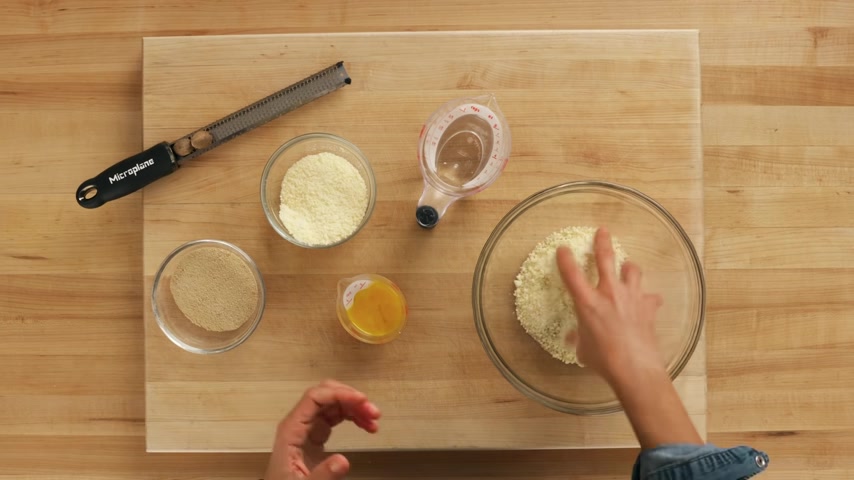
This is a traditional dough from Monte and it's a pasta called Satele .
We use equal , equal parts bread crumb and Parmesan .
And when we make this dish , traditionally , you're grating this into a chicken stock .
A bro , do a beef stock .
So there's actually no flour in here .
It's only the bread crumbs and cheese nutmeg .
This is more of a northern dish .
Very warm , comforting , similar to like a tortellini and bro do .
But this is a bread crumb pasta .
Essentially , this is a dish that we actually use whole eggs , whole eggs and a little bit of water .
So we're going to bring this together and this is going to be a really wet dough we're looking for because there is no flour in here .
So we have to find a binding agent .
So do you see as I formed a patty , essentially a dough and then let's say we don't have a box grater or a food mill or a potato ricer .
We're just going to roll this out .
I'm going to use a little bit of flour on my hands and we're going to make what they like to call is like little worms .
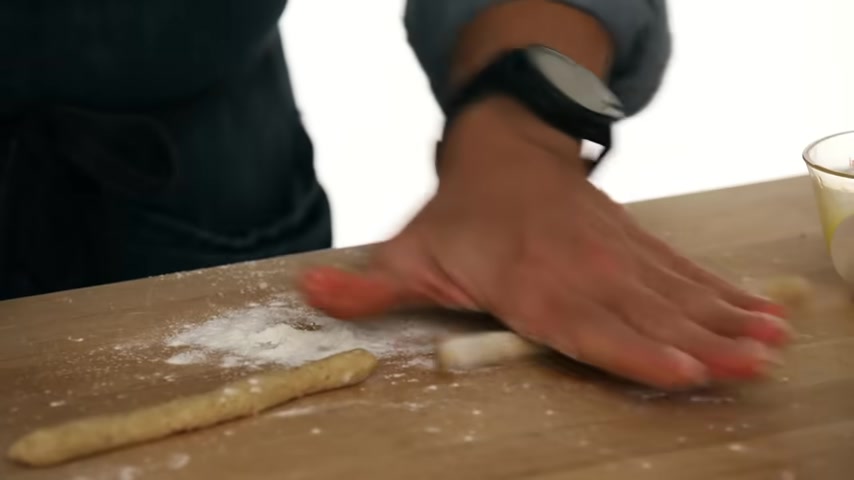
And you can see that this , if you are just dropping this right , you're going to poach it like almost a dumpling right into a liquid .
And it's a great way to use your extra bread , extra bread crumbs and to make a really special flavorful dough .
So here we are making pasta without flour , but that's what that whole egg is used for .
So the egg whites in your egg that we've been taking out for all of our other pasta .
That is your binder in here with the combination of the cheese and the bread crumbs .
So this is another alternative to pasta that people don't really know about .
And that's past .
This is Garelli .
So next , we're moving on to Garelli again , from Amelia Romana .
So again , I'm going to have my ruler out and I'm going to measure these squares a little bit bigger than the last time .
I'm going to do a two inch squares .
There are specialty gargle boards out there , but I am more old school .
I like a G board and a pencil .

So I'm going to take a little bit of water and seal these edges and then I'm going to take my pencil and start rolling it up .
There's one Garelli .
So then again , we're just using the water to seal them together .
So once they dry , they'll stick together in that very rapid boiling pasta water .
Garelli get served with more of a lighter tomato based sauce .
Nothing too heavy because you want to showcase the intricacies and then any kind of pasta that has a hole in it , you go is to try to get the sauce inside of it .
So when you're eating it , you get layers of pasta sauce , pasta sauce .
It also holds sauce so well because you have ridges on the outside and the kind of rigatoni penny hollow middle So once these dry and then they cook , they stay just like that .
And that is Garelli .
This is peachy .
Now , we are going to be making a traditional pasta from Tuscany called peachy .
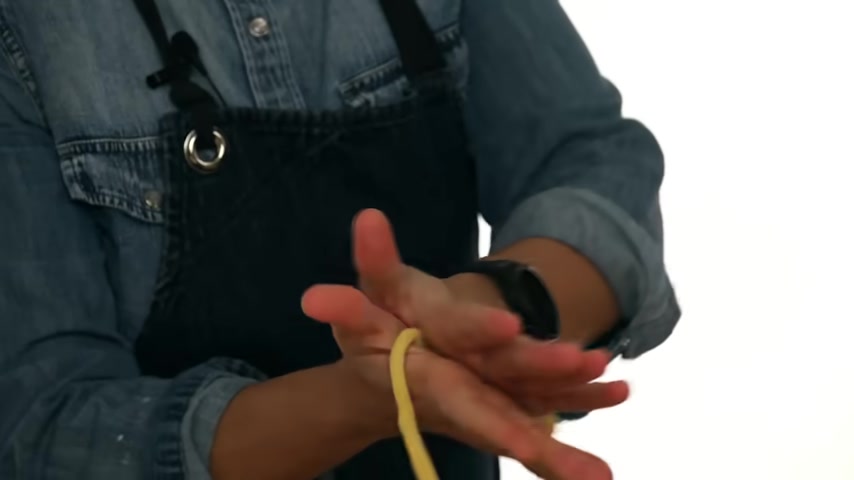
It's a thick hand cut spaghetti and it has to be rolled between the palms of your hands .
You can make peachy as long as short as you would like .
So instead of putting it through a machine or a guitar , we are sitting here and rolling each pasta in between the palms of your hand .
Traditionally , it has to touch your palm for it to be considered a , this is one of those pastas that you just have to accept that it is what it is .
You can see that there's , there's fat and skinny and fat and skinny .
Like if you are a real peachy maker in Tuscany , there's no such thing as that .
It would be one continuous flow .
And that's the challenging part of it in between the palms of your hands .
This is one of those shapes that's really traditional and served basically because it goes well with the tomatoes and wine .
You're in wine country and that's peachy .
This is Strozzi .
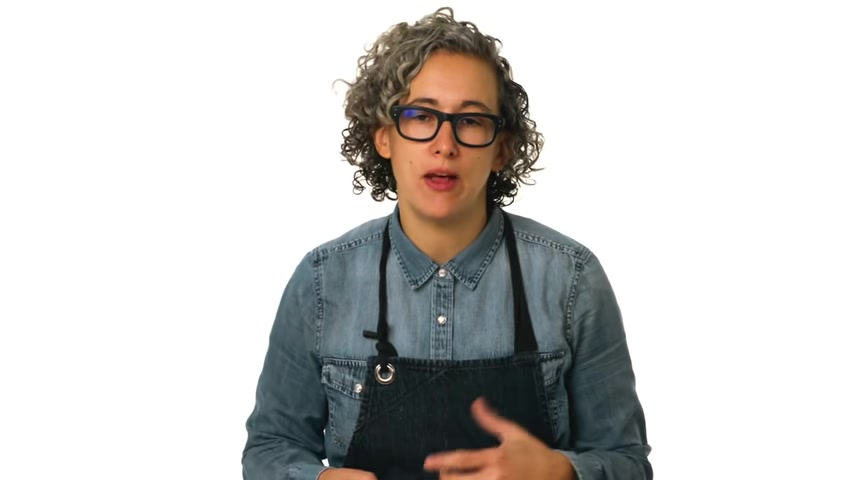
We are in Central Italy making a pasta called Strozzi , which translates to priest Strangler or Priest Choker .
That sounds pretty evil .
But in reality and the reason why they called it that was because when the priest would come to town , they would make a dish for them of these pasta and then the priest would eat it so fast that they would almost choke on it .
So , what I'm gonna do is I'm going to turn these into two inch thin ropes and then we're gonna use our bench scraper to flip them over .
So I'm gonna take our bench scraper .
I'm just gonna push them down and then you can see that there's just a little bit of a twist and a hollowness to them .
These are always handmade and really fun to make .
There's a lot of like feeling of the bench scraper if it's too , the dough is too wet or too dry .

But what we're doing is we're adding texture to it and layers and ridges .
So again , the common theme of this is the pasta was designed to hold the sauce without a sauce .
The pasta is nothing .
They're like two peas in a pod .
They need each other .
The friction on the board and creating that line in the center is giving those , those ridges and that texture , it needs to hold the sauce .
And that's , this is Papa Deli .
We're moving on to pepper deli from Tuscany traditionally served with a rabbit Ragu a little bit more stock based , not very heavy tomato products .
So we have our sheets of dough rolled out and then on the sides , we're going to cut it so that the top of the pasta is rich and the bottom is rich for pepper deli we can go as wide and small as you want .
But this one I'm going to do about an inch and a half and then I'm going to go straight up .
You can use that ruler again .
If we'd like , I'm going to trim this to a nice , perfect rectangle .
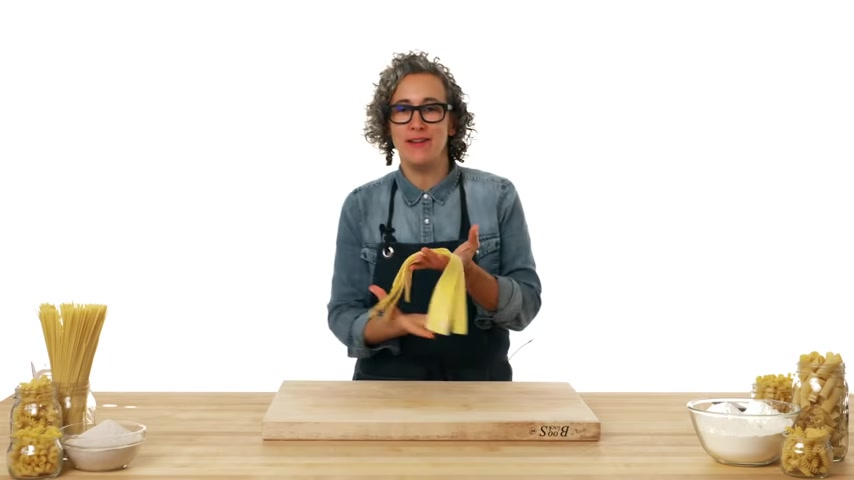
Always save your scraps .
And then we have our Papper Deli .
It's one of those pastas that it's about the actual pasta itself .
It holds sauce .
It's hardy enough that it can battle something like rabbit and it has a different nuance to it .
You wouldn't want to put this with something delicate .
This needs something that it can battle together for the star of the show .
I don't know if you want to keep rolling , but I don't particularly like pepper deli either , but it's OK .
It just smacks you around .
It's like one of those pastas and that is Papper Deli .
This is Bucatini also known as Perelli , comes from the region of Lao Bucatini means or a hole .
So it's a long spaghetti with a hole running through the center of it , which captures that sauce .
So this one , you might need a little bit more dough in the hopper .
Once it starts coming through , we're going to guide this Bucatini probably is about 8 to 10 inches long .
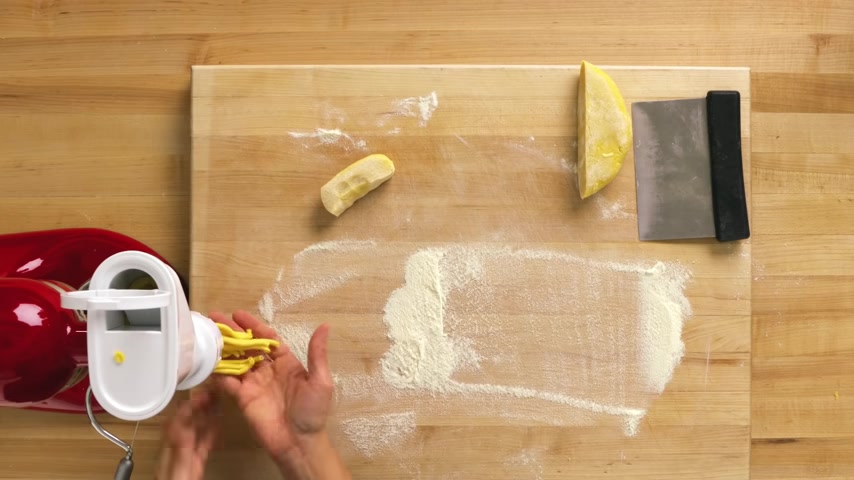
We want to keep it as straight as possible .
You can see the hole right through it .
So as it's coming out , we're just going to put a little bit of semolina to keep it from sticking to each other .
You can eat this fresh or dry .
A traditional drying time for a pasta that's mass produced is about 50 hours or so .
So that's up to you if you have the time or the patience or the willpower to wait that long .
So this is almost at the length that we're looking for and then we're just gonna get a little more semolina in there , make sure that the uh pasta isn't sticking together and that's , this is .
So now we're moving over to the region of La Marque where Tale and bolognaise is widely served .
Tale again is something that means to cut .
Tali is a smaller version of this .
It is a little bit of shorter and thinner than the cousin of the Paparelli .

But we are going to trim this up with a flat sided cutter so we can go north to South here .
And what I'm gonna do is trim them up one more time so that everything is nice and lean .
The Tale can also be served with a cream based sauce .
Also , you'll see in truffle season Tale with white truffles and butter is a very traditional dish .
Its a very simple pasta and it holds all of the sauces so well and it doesn't overshadow it .
This one is kind of a pasta that takes the back seat to whatever goes with it .
So this one is just a really like beautiful , elegant , soft textured pasta that allows whatever it goes with it to shine .
And that's tale .
This is sein another very common shape of pasta that is extruded is Penne .
Penne has many other names and Cousins .
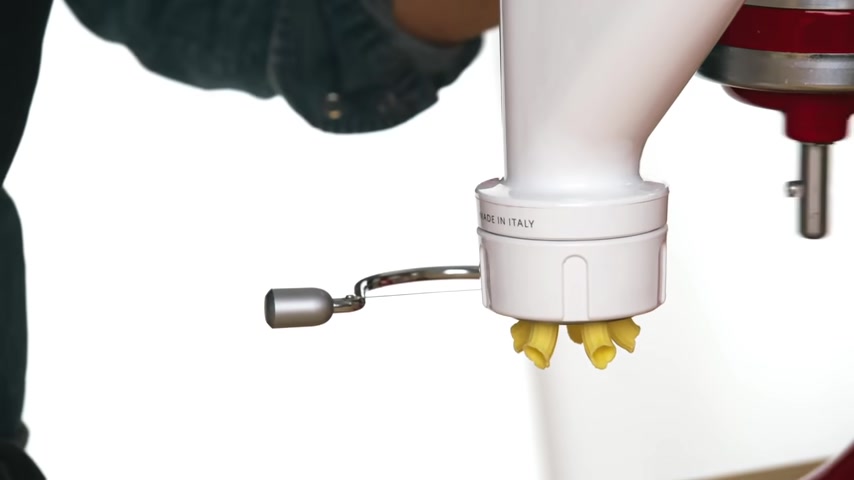
One is called the C so a penne traditionally is a diagonal cut , I believe in around the 16 or 1700 .
Someone did actually patent that cut and made the die for it .
So , Cedi is a flat cut version of Penne .
Another pasta from the , your region originated in Naples , a lot of tomato sauce there for this dish and why they came up with it .
We're going to get rid of that first bit and then you can actually , if you have one of these kitchenaid ones , put it right back in and keep going .
So in order to keep our pasta straight , we're going to keep guiding it down , kind of telling it what to do .
We want these to be a little longer about maybe four inches or so , we're going to keep guiding them and then we're gonna , and they also call it Cinti , which means the ridge is on the outside and that said this is Reggaeton .

So what I'm starting off with is a hackery or a rigatoni from Campania .
Traditionally , pocky is a smooth hollow rectangular shape and the rigatoni version is with ridges .
We're putting some Semolina down , we're going to place them into our extruder and we're going to get it going .
Most dyes that made in Italy is traditionally made in bronze , which allows the pasta to give it that exterior roughness and texture or the grooves .
In order to hold the sauce , we want to guide the pasta straight down about two inches or so .
And then once we get to that stage , we're going to cut it and lay them out .
So sometimes you'll see pori is a much wider pasta and rigatoni can be smaller .
They range in so many different shapes and sizes .
But traditionally , pori is smooth and rigatoni always has exterior ridges .
So we're going to keep pulling this straight down in order to assist with their shaping .
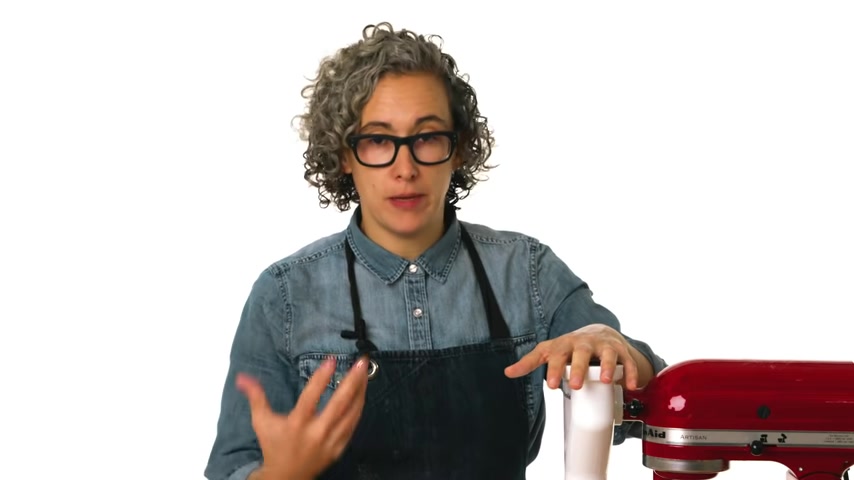
And that's to this is macaroni .
I think people kind of use the term macaroni and they think immediately of mac and cheese .
There is a version of macaroni that's served in Italy .
That is a short 1 to 2 inch hollow tube has many uses to it .
It can be served in soups , stews for light pastas and broths or obviously the more well known mac and cheese .
So this one , if we keep it straighter , we'll have more of a longer , easier version of macaroni .
These are curling just so slightly so they could fall into the elbow macaroni category or we can keep them shorter and let them curl .
Macaroni , I think has a bad wrap in the United States because of what it's really known for .
But it's a beautiful , elegant short tubular pasta that should have its day too .
And that's macaroni .
This is quadra .
All right .
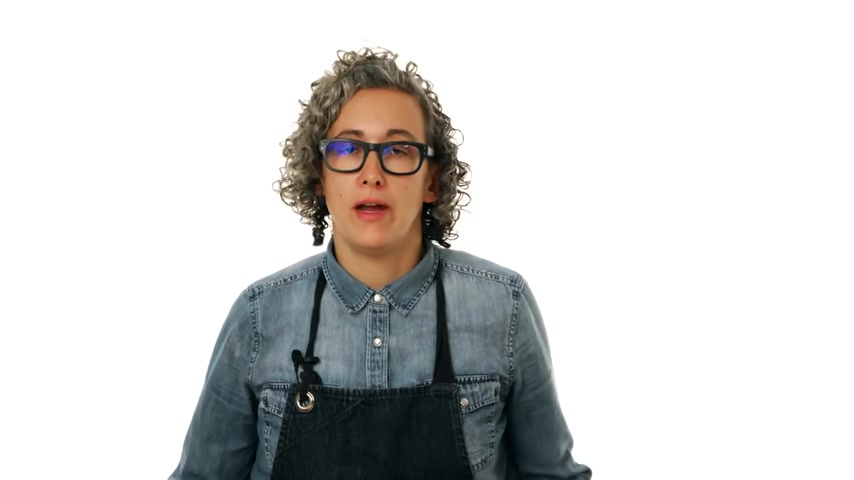
So now we're moving further south to Puglia down in the heel of the boot of Italy .
There are very well known pasta shapes that come from down there .
And this is not one of them , this is called quadra , meaning a four sided pasta .
So you'll see this as many different shapes and forms .
So , what I'm making is more of a hollow quadra .
Right now , we're going to get our ruler out again and this one is going to be a 2.5 inch rectangle .
So we're gonna cut it .
Quadra in Julia can mean a four sided ravioli , a small square which is also called Franco boli which means stamp .
But I like to kind of make this hollow freestanding quadra .
So I'm going to stretch this out just a little bit and now I have a perfect square .
I'm gonna dab a little water on all four corners and then we're going to bring it up together .
So now this is a hollow shaped quadra and then we're gonna let that sit and dry .
This is traditionally served in a broth because you don't want to toss this into a heavy sauce and as simple as that , it's gorgeous .
It looks like a flour and that's quadra .

This is the Garnier , right ?
So now we are moving over to Calabria to make Lanier , the first known pasta shape in Italy , it has been translated to lasagna over the years .
So Lanier is traditionally made with chickpeas down in Calabria .
It doesn't look like lasagna except it has the rigid edges as well .
So what we're going to do is we're gonna start again and make sure these are nice and even Lane is a ribbon with rigid edges .
So similar to the Paparelli from the North , but this is served with chickpeas and a little bit of chilies down in Calabria .
Sometimes you'll see this made out of chickpea flour as well .
So these are our lanier ribbons and that's Lane .
This is a , so we are still in the south of Italy .
Now we're back in Puglia and one of the most traditional pastas that come from this region is orte , which translates to little ears .
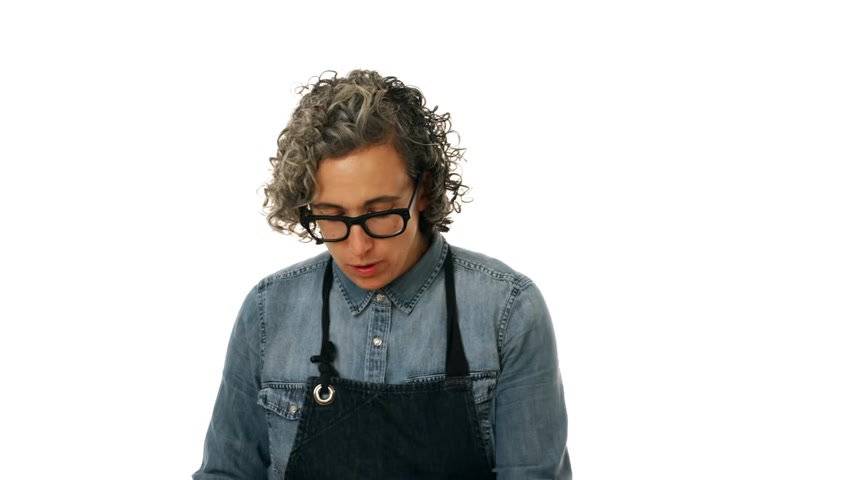
So in order to make this one , we make a beautiful rope nice and even still with our egg traditional or is made with water or egg whites and flour .
The region of Julia is traditionally extremely poor and eggs are not the most uh common down there .
They kind of use more of what's in the land and what they have .
So I'm gonna take my ropes and we're going to get them into little spheres .
There are numerous ways of making a , a way of using a butter knife .
There's also the way I prefer is to take the sphere and push it into your palm and we have little ears .
This is the most traditional pasta in Italy .
It's always served with Brocco robb and sausage .
Sometimes you'll find it with a dried fob of puree and also Brocco Robb .
There's no deviating .
That is , that is the dish of the region and that's what we stick with it .
This is the end .

All be all pasta , the shape how it holds the stock , the sauce , how the sausage just gets cradled inside these little nooks and crannies of the ears .
It really is something special .
And that's a , this is Capelli .
We are back in making cale .
So cavi is another different shape similar to G .
So what we're going to do is we're going to roll these out into long ropes again and then instead of making a short sphere , we're going to make a little bit of a longer oval shape .
Once we get this into a nice oval shape , we're going to take our G board , we're going to push it in and then roll it and then roll it off .
So again , we're going to push this in and then flip it over .
And these are a style of gnocchi that's made with pasta dough .
This is another kind of shape that holds a raid .

Do you'll find Cavill to be served with kind of a light tomato meat Ragu or this one can be served with seafood as well .
So these are kind of fun .
They're kind of long and you just kind of flip them over Cavill .
You can use your normal egg yolk dough and serves an amazing purpose .
It holds sauce .
Well , it has the ridges , it has an opening on the inside and it also can hold so many different things .
Like this is great with a broccoli Ragu or a cauliflower Ragu .
Traditionally , this could be made with ricotta and sometimes in Sicily , they use saffron .
So there's a lot of variations on this and I find the handmade ones , they're more rustic and feel a little more homemade than the actual machine .
And that's cale .
This is Taco .
All right .
So now we're gonna move um into the Abruzzo Molise area and is a shape called Taco Nele .
So Taco Nele is in the shape of a diamond .
It's a very rare one .
There's not that much information .

There's not that many stories about this pasta shape , which I don't know why because it's so easy .
And it's another beautiful pasta that's served with vegetables .
As we've seen the tele and the pepper dele and the cale .
All these have served with really heavy Ragu .
Sometimes we need a beautiful , elegant , soft pasta to be served with the vegetables .
So what doing right now is I'm going to take our magical ruler and I'm going to cut out our diamonds .
So this one is traditionally served with more of a fresh chickpea .
We're going to keep going here .
I'm going to use our ruler again here and make sure I'm not making them too big and then these little smaller squares and triangles we can use for re roll them back in .
So this dish you'll see more of a dried pasta .
You'll see a lot of this in a and Molise and more of a badly cut diamonds .
Actually , I'll be honest with you right now , the Taco Nele is one of those pastas that doesn't have a lot of history to it .
It's just something that they make .
I'm not very good at it .
My diamonds are pretty rough .
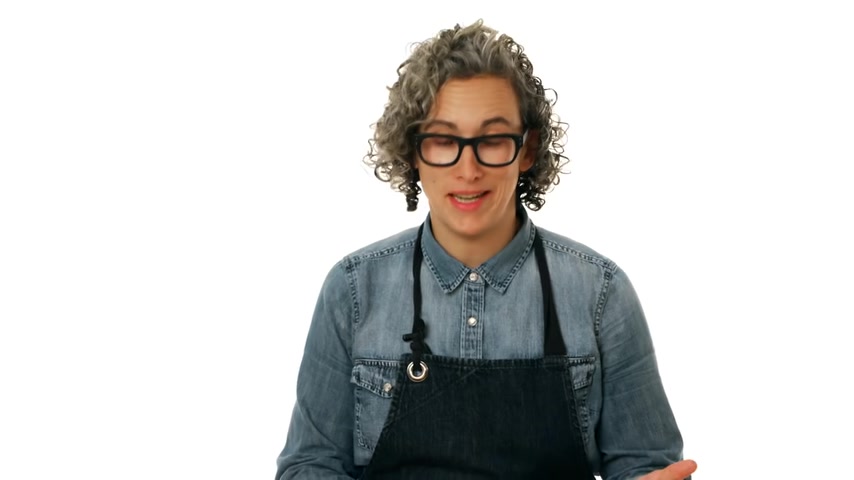
There's a diamond in the rough big time and that's Taco Nele .
This is , we're still in campagna talking about fusilli .
So traditional fusilli is based on the word which means like a spindle .
So a traditional corkscrew curly Q looking pasta , if we're doing a fusilli logo or it just means long short in the United States is also known as Rotini .
I don't know why , but that seems to have been the translation .
So we have our Semolina dough .
We're going to get it into a hopper and start slowly pressing it down .
I particularly like logo .
I find that the waves of it kind of resemble a couple other different pastas but also holds that same sauce and has more surface area between those ridges or the spindles .
If we want to make it shorter or keep those cork screw looking shapes a little bit tighter , we can control that .
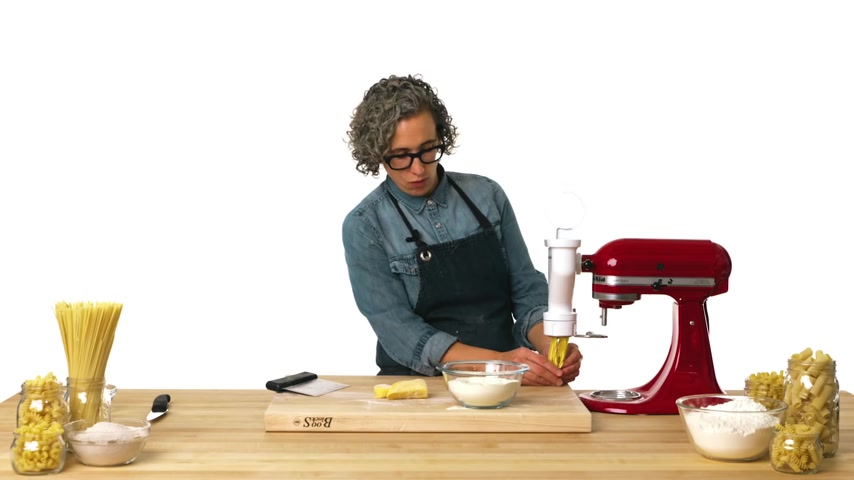
We can pull it down as it's coming out of the extruder or we can shorten it and hold them back a little bit .
These are a more traditional fil , a little bit longer .
So we're going to get rid of this guys .
A traditional facile around four inches long .
So that's where we'll keep these today .
And then as you're pulling the pasta out of the extruder , want to get that Semolina back on it again .
And that's , and that's how you shape every pasta .
We may not have shaped every single pasta today , but we did pretty good .
I mean , we did the best we could , we could have shaped more , but that's all we have for today .
Are you looking for a way to reach a wider audience and get more views on your videos?
Our innovative video to text transcribing service can help you do just that.
We provide accurate transcriptions of your videos along with visual content that will help you attract new viewers and keep them engaged. Plus, our data analytics and ad campaign tools can help you monetize your content and maximize your revenue.
Let's partner up and take your video content to the next level!
Contact us today to learn more.